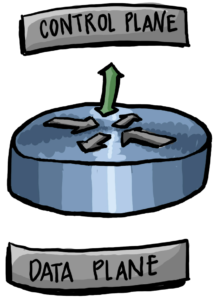
Build Your CCNA Study Tracker!
As we examine the content of the latest CCENT and CCNA exams from Cisco, we cannot leave out the accelerated exam version! Enjoy this easy to copy and paste format of the official exam objectives. Remember to consider building your study tracker now. For example, enter the blueprint below into a spreadsheet or similar software in order to make a study checklist.
Consider rating yourself on each item. I like to use a 1 to 5 scale. For example, 1 means I have never heard of that technology. 2 indicates I have heard of it before. 3 means that I could describe it. 4 indicates that I could configure it if necessary, while 5 means I could also troubleshoot the technology! Note that in this exam, not all areas require you to both configure and troubleshoot.
There are many topics you really only need to take to level 3 in order to be ready. Read the examine blueprint topics vey carefully. Notice that topics where you must “configure” or “verify” or “troubleshoot” spell out clearly. Topics listed with verbs like “describe” are very often theory only type questions, or at the very least, do not feature simulation style questions.
1.0 Network Fundamentals (15% of your exam questions will come from this section)
1.1 Compare and contrast OSI and TCP/IP models
1.2 Compare and contrast TCP and UDP protocols
1.3 Describe the impact of infrastructure components in an enterprise network
1.3.a Firewalls
1.3.b Access points
1.3.c Wireless controllers
1.4 Describe the effects of cloud resources on enterprise network architecture
1.4.a Traffic path to internal and external cloud services
1.4.b Virtual services
1.4.c Basic virtual network infrastructure
1.5 Compare and contrast collapsed core and three-tier architectures
1.6 Compare and contrast network topologies
1.6.a Star
1.6.b Mesh
1.6.c Hybrid
1.7 Select the appropriate cabling type based on implementation requirements
1.8 Apply troubleshooting methodologies to resolve problems
1.8.a Perform and document fault isolation
1.8.b Resolve or escalate
1.8.c Verify and monitor resolution
1.9 Configure, verify, and troubleshoot IPv4 addressing and subnetting
1.10 Compare and contrast IPv4 address types
1.10.a Unicast
1.10.b Broadcast
1.10.c Multicast
1.11 Describe the need for private IPv4 addressing
1.12 Identify the appropriate IPv6 addressing scheme to satisfy addressing requirements in a LAN/WAN environment
1.13 Configure, verify, and troubleshoot IPv6 addressing
1.14 Configure and verify IPv6 Stateless Address Auto Configuration
1.15 Compare and contrast IPv6 address types
1.15.a Global unicast
1.15.b Unique local
1.15.c Link local
1.15.d Multicast
1.15.e Modified EUI 64
1.15.f Autoconfiguration
1.15.g Anycast
Continue reading What is in the Latest Cisco 200-125 CCNA v3.0 Exam?
